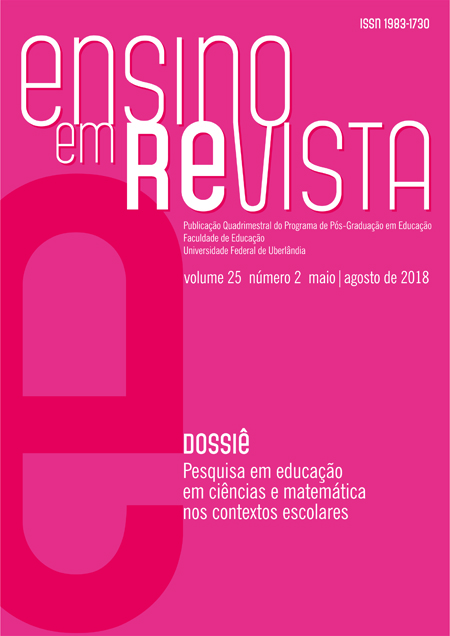The High School Reform - 2017: notes on Teacher Training, Education and Physical Education
Main Article Content
Abstract
The high school reform and the Law 13.415 of February 16, 2017, are the subjects of analysis for this article that discusses the repercussion on Brazilian education inducedby political pressure, external to researchers of the field, regarding the teaching of physical education and the implications for teacher training. The article problematizes the characteristics of the physical education field expressed in law and the implications for teacher training. Methodologically, it uses the dialectical approach for bibliographical and documentary research and itassemblesa discourse analysis as research's technique. It concludes that the reform configures the physical education like a practice, idealizing a relation with theory; the law allows the use of the National Common Curriculum Basis document; it prioritizes the object of study from the perspective of the corporal culture of movement; it values the sports and conditioning gymnastics knowledge.
Downloads
Article Details
The published works are the property of their authors, who may make use of them for subsequent publications, always including the original edition (original title, Ensino em Re-Vista, volume, number, pages). All articles in this journal are the sole responsibility of their authors, and no legal responsibility for their content rests with the Journal or EDUFU.
References
ABREU, Meriane Conceição Paiva; SOARES, Marta Genú. O capital cultural no manuscrito da Base Nacional Comum Curricular: reflexões para a realidade Pan-Amazônica. In: OLIVEIRA, Ivanilde Apoluceno de; ALVES, Fábio Joséda Costa (Org.). Educação, diversidade e inclusão sociocultural em diferentes contextos. Curitiba: CRV, 2016, p. 139-152.
BOURDIEU, Pierre et. al. (Org.). A miséria do mundo. 9. Ed. Petrópolis: Vozes, 2012.
BOURDIEU, Pierre. O poder simbólico. Lisboa: DIFEL, 1989.
BRASIL. Estatuto do Conselho Federal de Educação Física –CONFEF. Disponível em http://www.confef.org.br/extra/conteudo/default.asp?id=471. Acesso em fevereiro de 2017.
BRASIL. Lei de Diretrizes e Bases da Educação Nacional 9394/96. Disponível em http://www.planalto.gov.br/ccivil_03/leis/L9394.htmAcesso em 19 de fevereiro de 2017.
BRASIL. Lei 13.415, de 16 de fevereiro de 2017. Disponível em http://www.planalto.gov.br/ccivil_03/_Ato2015-2018/2017/Lei/L13415.htm#art3Acesso em 19 de fevereiro de 2017.
BRASIL. Medida Provisória nº 746, de 22 de setembro de 2016.Disponível http://www.planalto.gov.br/ccivil_03/_Ato2015-2018/2016/Mpv/mpv746.htmAcesso em 12 de fevereiro de 2017.
COLETIVO DE AUTORES. Metodologia do ensino da educação física.São Paulo: Cortez, 1992.
CÓSSIO, Maria de Fátima. Base Comum Nacional: uma discussão para além do currículo. E-curriculum,PUC-SP, v.12, n. 03, p.1570-1590, out/ dez 2014.
MONTEIRO, Fabrício. A educação física escolar e a LDB. Faculdade Estácio, SP. Disponível em http://www.gpef.fe.usp.br/semef%202014/Mesa%20Fabricio_Monteiro_-_A_EDUCA%C3%87%C3%83O_F%C3%8DSICA_ESCOLAR_E_A_LDB.pdf. Acesso em 07 de janeiro de 2017.
MOREIRA, Laíne. Et. al. Apreciação da Base Nacional Comum Curricular e a educação física em foco. Motrivivência,UFSC, v. 28, n. 48, p. 61-75, setembro de 2016.
REZER, Ricardo. Educação física na educação superior: trabalho docente, epistemologia e hermenêutica. Chapecó: Argos, 2014.
SANTOS, Rulian Rocha dos. Breve histórico do ensino médio no Brasil. Seminário Cultura e Política na Primeira República: Campanha Civilista na Bahia.UESC. 2010. Disponível em http://www.uesc.br/eventos/culturaepolitica/anais/rulianrocha.pdfAcesso em janeiro de 2017.
SAVIANI, Dermeval. Escola e democracia. 42ªed. Campinas: Autores Associados, 2012.

